24th Street, San Francisco
The Mission District in San Francisco is a wonderful neighborhood, no doubt one of the most distinctive and delightful in the United States. Reports of its demise have been greatly exaggerated. I was there in late October and took a walk up and down 24th Street, and loved it as much as I have for years.
Yet it's also home to a community in deep distress. Rents have skyrocketed and residents who have been there for decades have been evicted or priced out, including prominent community members. The Mission, and the 24th Street corridor east of Mission Street in particular, has been the epicenter of San Francisco's Latin American immigrant population for decades, but last month, a study by the city's budget and legislative analyst found that, "if current trends continue, the Mission’s Latino population will fall from 60 percent in 2000 to 31 percent in 2025. It is now at 48 percent."
The Mission is a victim of its success. More precisely, it's a victim of our collective inability, over more than half a century, to build more places like it.
Joe Cortright at City Observatory wrote last year that we have a "shortage of cities." He's right. It's not simply a shortage of housing units—although San Francisco and the Bay Area certainly have that. It's a far more drastic shortage of worthwhile urban places. With the result that when a great urban place is "discovered" by the moneyed classes and becomes trendy, the price of real estate tends to shoot through the roof.
The purpose of this post is not to weigh in on the political debates around development in the Mission. There was a proposition on the San Francisco ballot a couple weeks ago that would have placed a moratorium on new market-rate development in the Mission District. It failed, but it was hotly debated and inspired vast amounts of passionate rhetoric on both sides. If you want incredibly in-depth analysis of the policy issues involved, TechCrunch's Kim-Mai Cutler writes some of the best. But I don't want to go there. This post isn't about that fight.
This post is about appreciating what a neighborhood built on Strong Towns principles can be. It's about the magnitude of the challenge we face in building more of them. And in protecting the ones we have, through the inevitable economic and environmental disruptions that the next few decades will bring.
A WALK IN THE CITY
These are street scenes from a Late October afternoon on 24th Street:
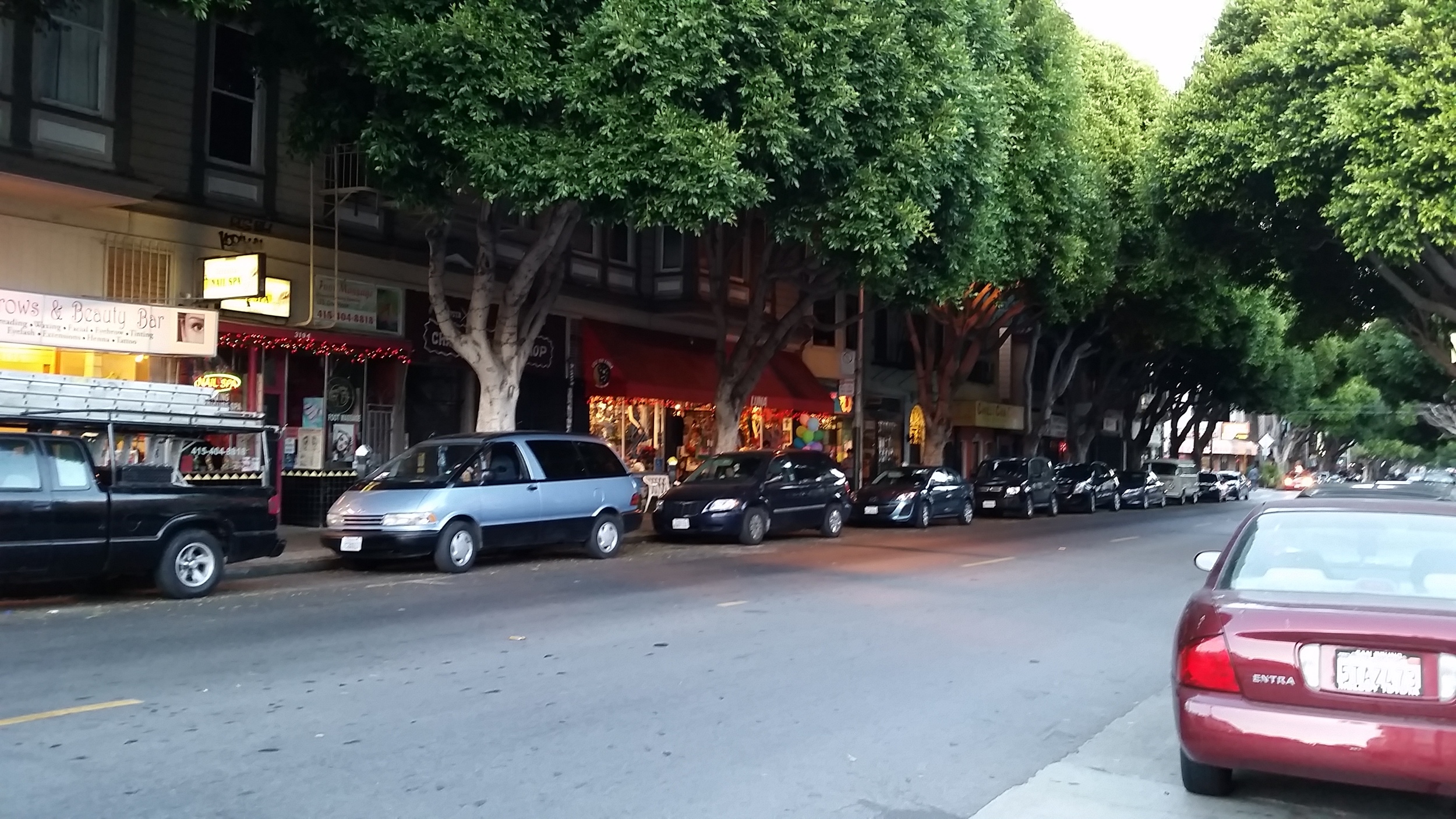
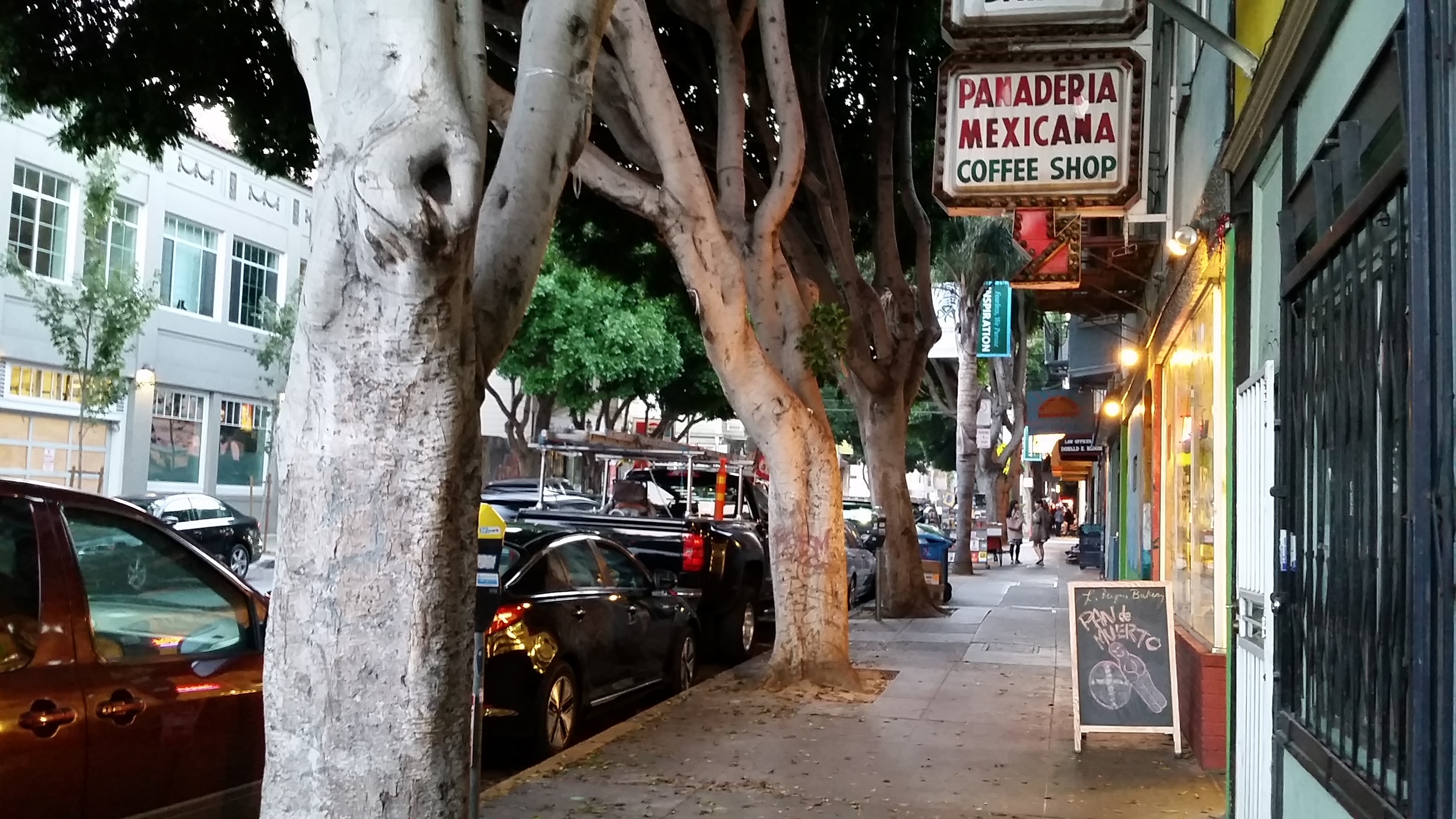
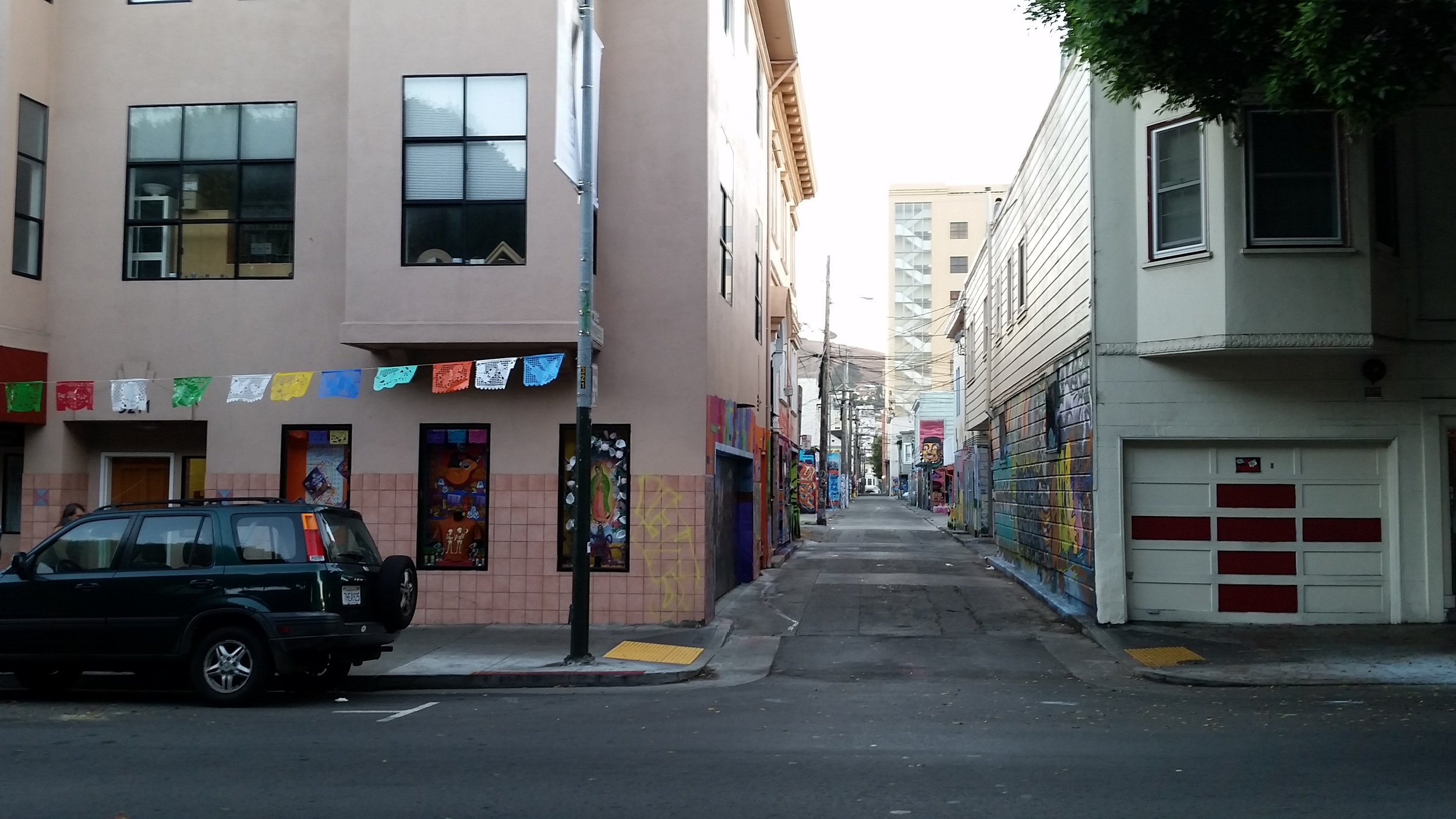
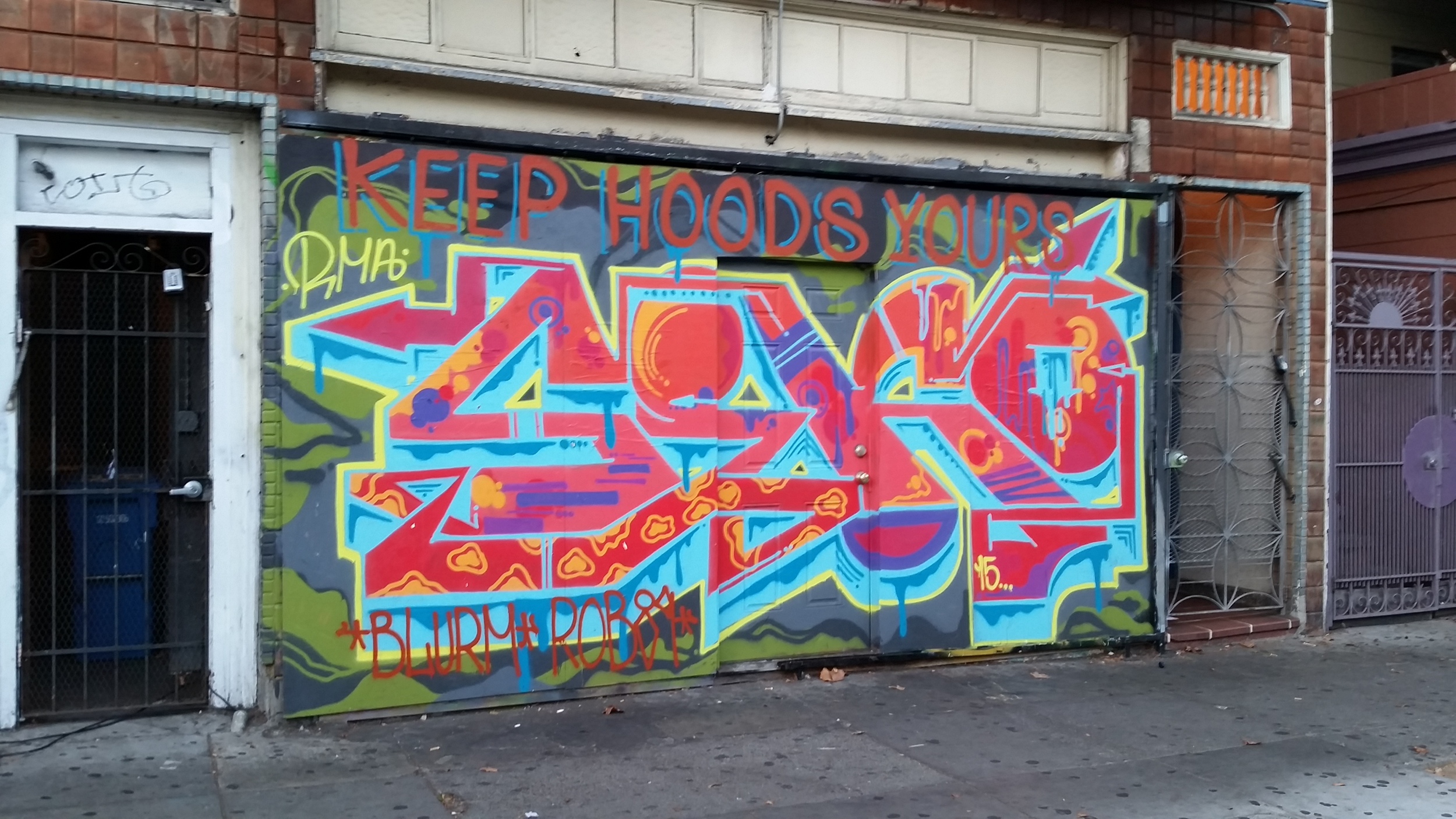
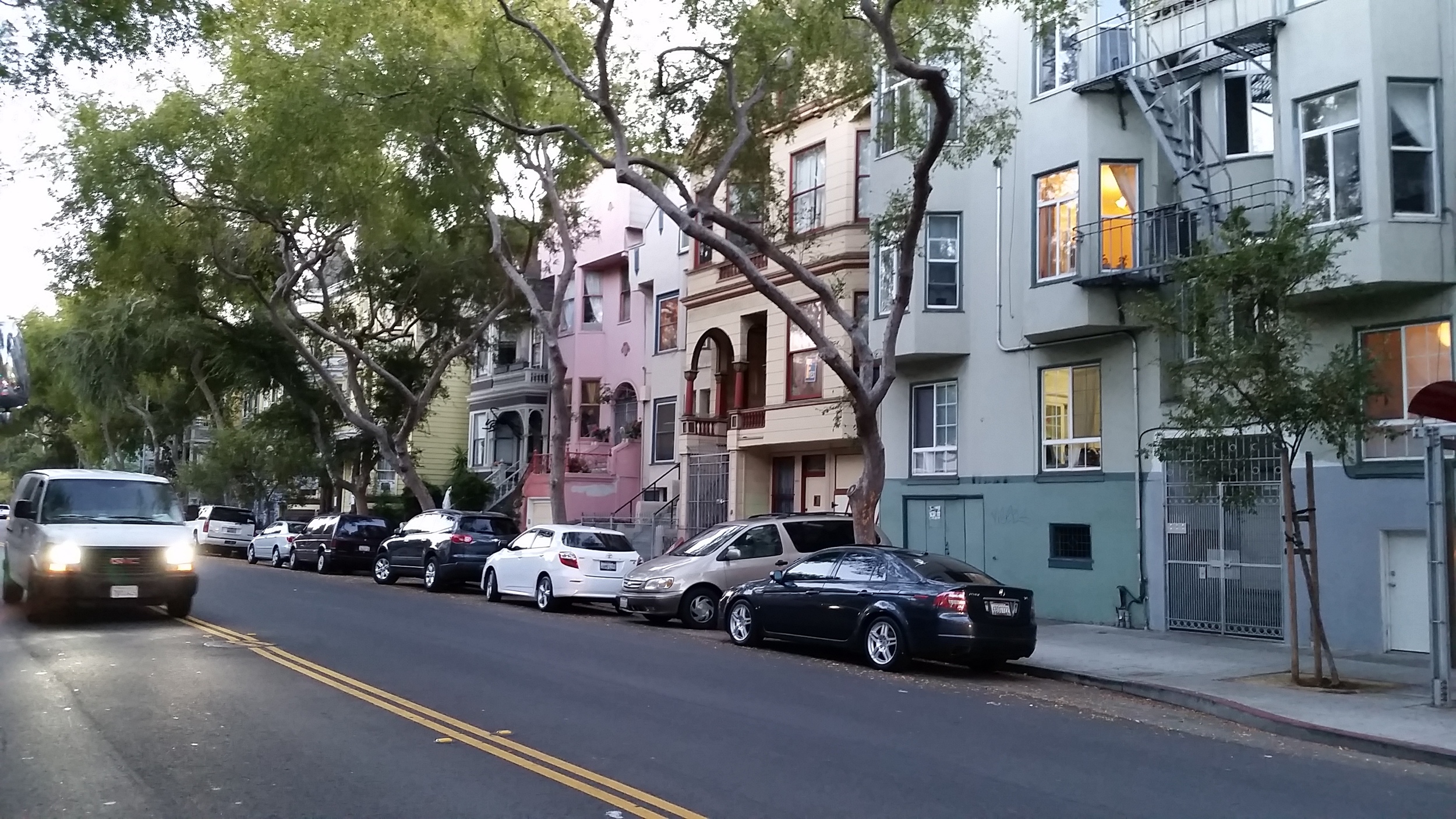
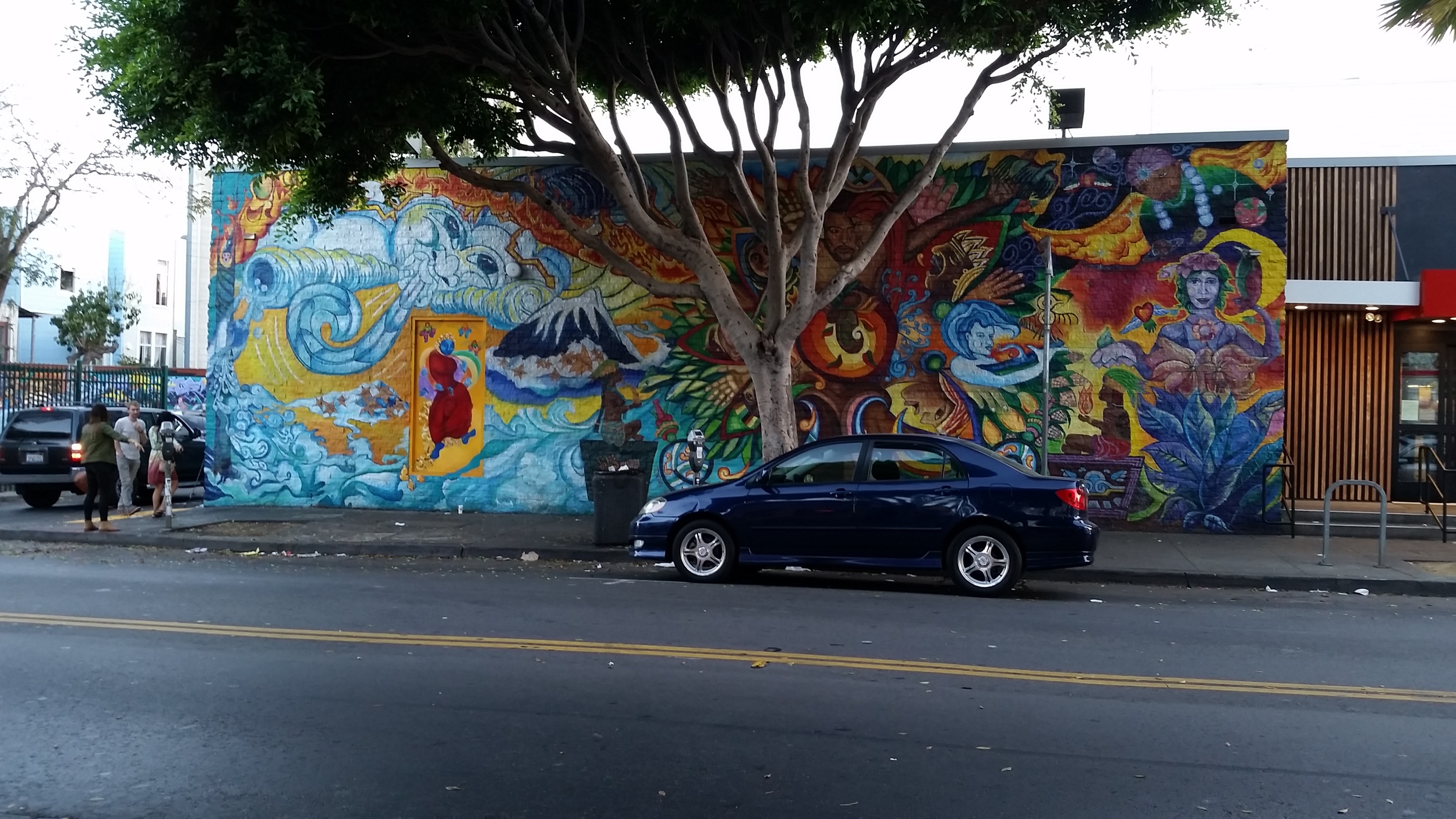
The Mission has been San Francisco's center of Hispanic culture and community for decades. Long before that, it was a hub for earlier waves of Irish and other immigrants. Today, even the Irish pubs celebrate Día de los Muertos:
WHAT MAKES THIS A STRONG NEIGHBORHOOD?
24th Street embodies so much of what we're talking about when we talk about Strong Towns. The development pattern is fine-grained; no superblock buildings here. The street life is chaotic, with the result that cars move slowly and pedestrians can walk relatively unafraid.
These businesses are almost all locally-owned, small-scale operations. Located somewhere without this kind of bustling pedestrian life, I bet a lot of them would fail to make ends meet.
Here, they're part of a cluster of businesses that share a community of customers and thus benefit hugely from sharing a geographic location as well. The whole is absolutely greater than the sum of its parts. This area is extraordinarily productive in terms of the economic activity and value it generates in a small space.
It's even more impressive when you look at all this activity relative to the incomes of the people who have historically lived and shopped there. I single out 24th because it still caters to a largely low-income Hispanic community, unlike some of the Mission District's other commercial streets. That community's entirely warranted fear of displacement notwithstanding, for now it's still thriving in doing so. This is one of the keys to the Strong Towns message: we articulate the distinction between a productive place and a place where wealthy people live. They are far, far from the same thing.
A lot of the places where wealthy people live are not productive; they may even fail to sustain the very cost of the infrastructure that services them. It's just that the bill hasn't come due yet. Debt has been used to defer it.
24th Street did not become what it is through massive infusions of public or private debt. It became what it is through a process of thousands of modest improvements over many years. It's resilient that way. If one business fails, another will replace it, while the street goes on much like it was. And through those modest changes and improvements, it has matured into a place its residents feel a remarkable pride in and attachment to. And crucially, a place that allows a community that has faced a lot of poverty, hardship, and racial discrimination to feel that there's somewhere they fully belong in the city they call home.
That's why it's a place they're willing to fight ferociously for.
Source: Evictionfreesf.org
Source: plaza16.org
Jane Jacobs, in one of her more prescient passages, wrote about "gradual money" versus "cataclysmic money." Money spent on bottom-up improvements to a neighborhood by its residents, on building upkeep and expansions, leads to the process she called "unslumming," in which prosperity and quality of life in an area gradually improve without forced displacement of the existing residents. On the other end of the spectrum are the vast infusions of cash associated with large redevelopment projects that tend to displace the existing residents and businesses of a neighborhood and leave something altogether more sterile and less resilient—lacking the intricate web of social and economic ties that comprise a community—in its place.
Today it's the much-maligned tech industry that is the source of gold-rush-like levels of Jacobs's "cataclysmic money in the Bay Area. Ironically, the clustering effects that make 24th Street work as an ethnic business district are not all that different from the reason the Silicon Valley / SF tech industry cluster exists. Companies benefit from being near other companies doing related things. In the tech case, it's less about sharing customers and more about sharing a workforce: the area is a magnet for the most highly skilled tech workers and would-be entrepreneurs from around the globe. This is why companies continue to locate there.
But the Mission was a productive place before the latest wave of tech money sloshed in. It was a productive place before the 1990s dotcom bubble, before the hipsters and artists found it. The seeds of 24th Street's success were sown a long time ago. They were sown over a long period of time, by a lot of people. No angel investor or headstrong entrepreneur did this. And the Mission will, mark my words, be a productive place, a vibrant place, a mini-Strong Town within one of America's strongest cities, long after this wave of brogrammers and venture capitalists have packed up and left with or without their money.
This is a place that is resilient by nature of its physical form, and the place itself will be fine. Whether the established community of immigrants, activists, and artists survives in that place is another question, and one that should concern all of us because of what it portends.
Evidence of gentrification on 24th. (Source: Google)
THE COMING DECADES OF DISRUPTION
America's Suburban Experiment is failing. The way we finance development is failing. It is only going to become more and more obvious that in a lot of the places we built, we can't afford to maintain the infrastructure we already have. And what will worsen the blow is that suburban America is full of whole neighborhoods, massive subdivisions, which were built more or less in one fell swoop by a single developer. When the infrastructure starts to fall apart, guess what? It's going to fall apart all at once. And we won't have the money to fix it. Or will balk at the tax increases that would be required.
What keeps me up at night is the fear that the more we realize this, the more capital, and wealthy individuals, will choose to flee places with a failing development pattern, and take their money to places like the Mission District. This train isn't slowing down.
We have a shortage of cities. A very small portion of our developed landscape in this country is built in ways conducive to generating sustainable wealth. A very small portion of our country is built according to the Strong Towns principles of incrementalism, adaptability, and prioritizing people over cars. WalkScore maps of most American metro areas have a hell of a lot more red (car-dependent) than they do green (walkable).
I'm terrified that when the destructive power of the fiscal time-bomb we've set ticking becomes undeniable, cataclysmic money will flood the remaining places that are built for success—not just already-expensive San Francisco and New York, but currently-bargain-priced traditional urban neighborhoods in older Midwestern and Southern cities—and transform them forever, not for the better.
I'm terrified that the poorest and most marginalized members of our society will be increasingly cast to the exurbs, to the most marginal, least accessible and livable, least fiscally-and-environmentally sustainable places we've built. Places where the odds are stacked a mile high against a new 24th Street developing.
WE NEED MORE 24TH STREETS
We need to replicate the things that make the Mission, and other great urban neighborhoods, work. We need a flood of investment, but it needs to be in 200 or 1000 tiny projects—little bets—for every one megaproject a developer would build under the current business-as-usual approach.
It can be done. Here's a historical table of San Francisco's population growth in its early years—note its near-doubling between 1900 and 1930, even with the setback of a devastating earthquake in 1906.
Chicago's growth before 1930 was even more staggering. It doubled in scarcely a decade, not once, but several decades in a row.
Now, our national population is not growing like that, and never will again. Nor am I suggesting existing big cities should expect to, or want to, accommodate population explosions like that to meet some projected demand.
The point is that when people commit to a place, when a place is productive and free to attract new residents away from places that are built to fail, it can grow astonishingly quickly even in an incremental fashion. With a walkable pattern. And to a large extent, one lot at a time. Of course these cities had massive growing pains... but portions of them have matured into some absolutely wonderful places. And what's our alternative?
Incremental development doesn't have to mean excruciatingly slow development. But how do we unleash that tidal wave of little bets—many of which won't pan out, but some of which will lead to the next generation of great, lasting urban places?
Do we do it by dismantling most or all of our zoning codes? Do we do it with microfinance and crowdfunding? Do we need to overhaul the property tax system, or the way you get a loan if you're not a capital-D Developer? All of the above? I don't have the answers. But these questions keep me up at night.
In the meantime, until we figure out how to get a lot more 24th Streets all over the continent, long live 24th Street. Viva la calle veinticuatro.








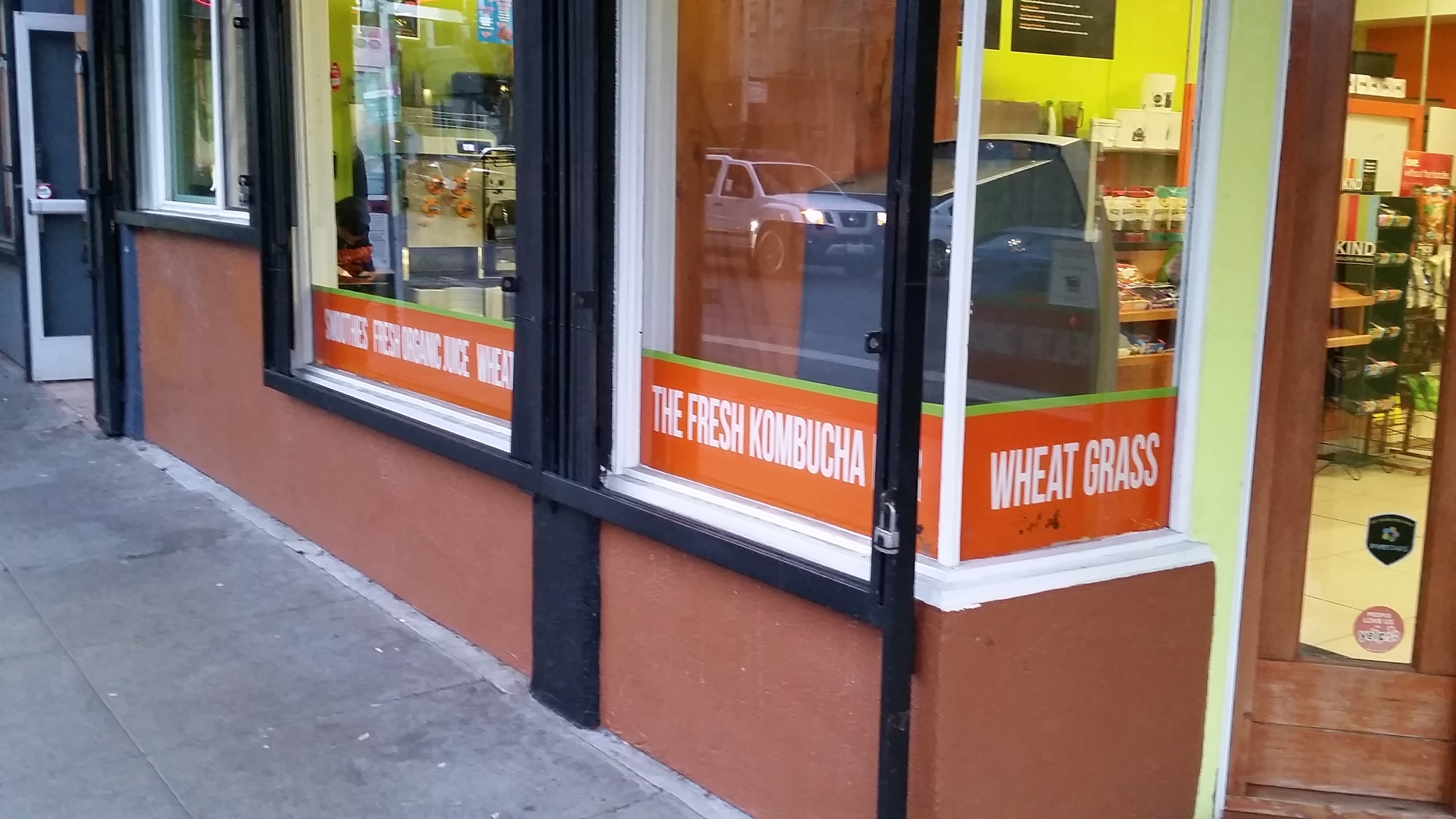


Daniel Herriges has been a regular contributor to Strong Towns since 2015 and is a founding member of the Strong Towns movement. He is the co-author of Escaping the Housing Trap: The Strong Towns Response to the Housing Crisis, with Charles Marohn. Daniel now works as the Policy Director at the Parking Reform Network, an organization which seeks to accelerate the reform of harmful parking policies by educating the public about these policies and serving as a connecting hub for advocates and policy makers. Daniel’s work reflects a lifelong fascination with cities and how they work. When he’s not perusing maps (for work or pleasure), he can be found exploring out-of-the-way neighborhoods on foot or bicycle. Daniel has lived in Northern California and Southwest Florida, and he now resides back in his hometown of St. Paul, Minnesota, along with his wife and two children. Daniel has a Masters in Urban and Regional Planning from the University of Minnesota.